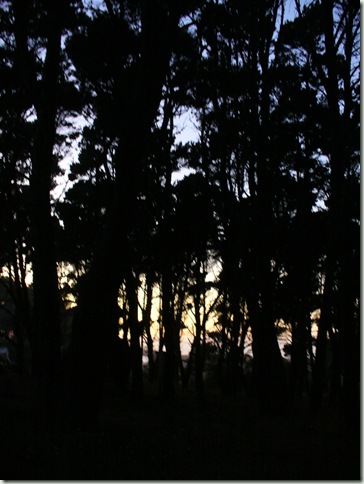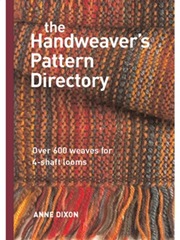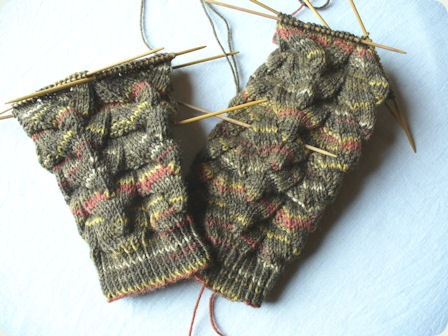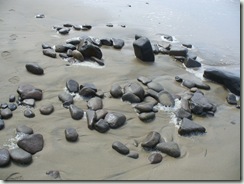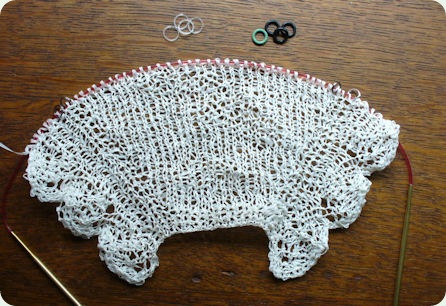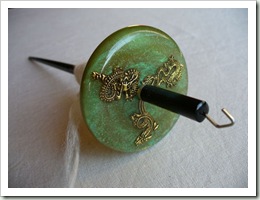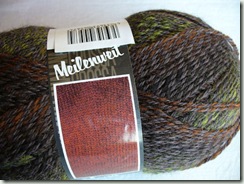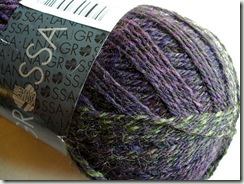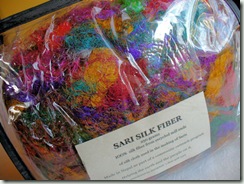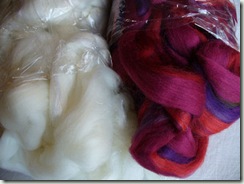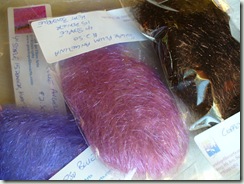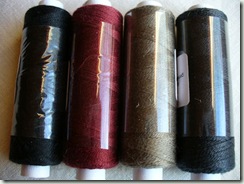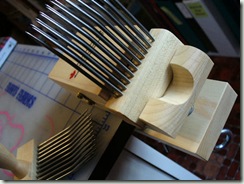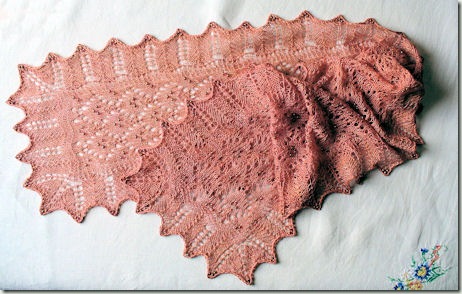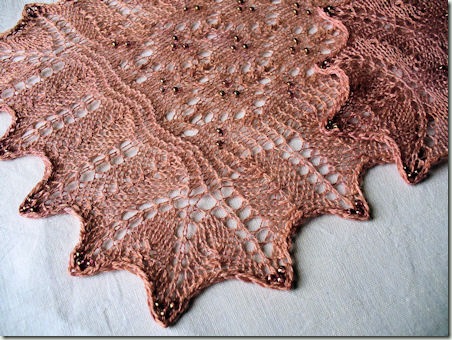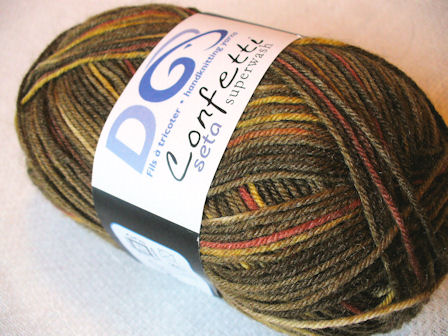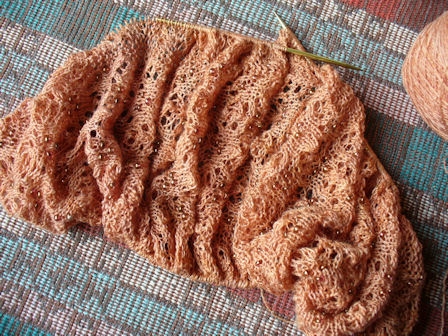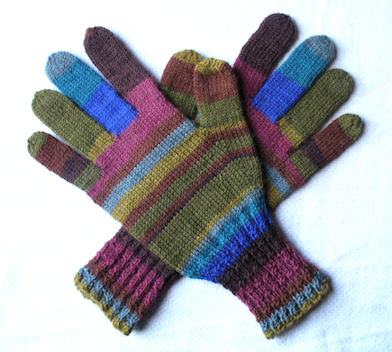
I’ve been waiting for Judith MacKenzie McCuin’s new spinning book “The Intentional Spinner: A Holistic Approach to Making Yarn” to become available. While indulging in our usual post-Ravelry meetup LYS-crawl, I found they had a copy just in. So of course I bought it even though I could have gotten it a wee bit cheaper if I’d waited until Chapters/Indigo finally had it in stock on their website. However I need to support my LYS at least occasionally. Since I don’t buy much yarn (really!) I like to buy the occasional book instead. And besides, the shop and staff are soooo nice! Did I mention that knit designer Sivia Harding works there? I love her.
But I digress. I first met JMM (as she is fondly referred to by former students and other admirers) waaayy back – several decades ago at least – when she taught a workshop for my guild. She stayed with me during the workshop and I have a clear image of her sitting at my kitchen table with my first angora bunny on her lap, petting him while we chatted. Judith is a sweet, down-to-earth and very talented spinner and instructor and she tells great stories while imparting the wisdom that she has gained over the years. I admire her very much, even if I do gently disagree with her occasionally.
This book is the one she really wanted to write while she was working on her first book “Teach Yourself Visually: Handspinning”. That one followed a particular formula and geared for complete beginners so she was unable to include some of the more advanced methods and details. “The Intentional Spinner” carries on from there, fills in some gaps and expands on techniques begun in the first book. The first half talks about the fibres themselves, where they come from and how they are produced. The chapter on manufactured fibres is particularly intriguing and a short chapter on the science of fibres has a number of ways to identify and characterize them. I inadvertently used one of these ways when I tried to dye cotton using techniques for protein fibres with my recent lace yarn! When the dye (in my case brazilwood) didn’t take to the fibre it eliminated it as wool. Heh. Lesson learned.
I was interested to note that there isn’t much space given to fibre preparation here. A little about combing and dizzing and a bit about blending plus a dash of carding and that’s about it. There are actually a lot of options for yarn design in the prep stage but this book isn’t the one to tell you much about it.
There are several drafting methods described (with somewhat unhelpful photos), including Judith’s specialty boucle draw (aka “wolf” yarn – the one I can’t manage even though she showed me In Person). Another chapter focuses on plies and novelty yarns. The info on plying is detailed and very helpful. I love the way she, gently as always, deflates the current obsession with “balanced yarn” saying that it should be adequate to its purpose and there is no magic formula. To my mind most plain 2-ply yarns that seem “balanced” are in danger of being underplied. But then I’m notorious for being unable to spin a good woolen yarn, so take that as you will. Worsted, semi-worsted, semi-woolen – yes. True long-draw woolen-spun – not so much. My fingers insist that my yarns be a certain level of firmly spun. I am pretty good at point-of-contact spinning (aka unsupported long-draw) though which isn’t included here. You need to be able to do that to spin on a charkha, support spindle or great wheel. For more, see Spinning Spider Jenny’s info on the different drafting techniques
here. (And yes, we’re waiting on
your book, hon’!)
Again I digress. After Judith shows you a whole bunch of both practical and fun methods of plying, then she discusses yarn design and how to plan the perfect yarn for your intended use. She points out all the characteristics of twist, diameter, elasticity and fibre and helps you choose among them to get the results you desire. My favourite section here is the one with the “spinning flowchart” which gives you the adjustments to make to your wheel and your spinning to achieve different results. You start by choosing a pulley, adjusting the tension and then spinning your default yarn. Then you fine-tune that until your yarn turns out the way you want. It’s brilliant. I want a poster-sized version of the chart for my wall.
Of course there is a section on Judith’s famous yarn finishing technique, aka “yarn torture”. It slightly felts, blooms and pre-shrinks protein-based yarn so that it is very stable in use. Unfortunately this section is very short (half a page of text and a page of photos) and limited to a very quick overview and an exhortation to sample and experiment. I found it a little annoying to be directed to a back-issue of Spin-Off magazine for a more detailed explanation of finishing. I have that issue but what if you don’t? Perhaps you’re reading this years from now and that issue is OOP? The only thing worse would be being directed to a website for more info. Websites are much more mutable than print. Yes, I know there’s only so much room in a book’s format for the details. And some stuff just has to be jettisoned for space. Glad I didn’t have to make those decisions. Twice as much text space is given to Judith’s treasured Paisley Shawl than finishing yarns, as an example of an editorial choice.
In the chapter entitled “Four Intermediate Spinning Projects” there are patterns for 3 knitted and one woven item. It’s assumed that you have some reasonable knitting and/or weaving skills but there are detailed instructions and suggestions for spinning the yarn that you will use. A lacey triangular scarf (big enough to be a small shawl), ankle socks, a kese (Turkish scrub towel) and woven scarf are small enough projects to be completed with a reasonable amount of effort and materials and each yarn is quite different. The hemp boucle yarn for the kese is particularly interesting because we don’t always know what to do with those fun-to-spin novelty yarns! Four isn’t a large number but this isn’t supposed to be a pattern book.
The last section includes information on storage, pests and display. We want our stuff to last, right? And there’s a mention of record keeping which is something I learned from Judith at that long-ago workshop. Even though I don’t use that method any more (preferring to use the computer instead) I still have copies of the spinning record sheets that she gave me. The blank spaces for information include things you might forget to record such as which wheel (assuming you own more than one) and which whorl you used for spinning the singles or plying, type of spinning technique used (short forward draw, long-draw, from the fold etc.), and the direction of spin and ply (or plies) twist. For some complex yarns these details could be vital to reproducing something similar in future. Ask me how I know.
In conclusion, Judith has written a reasonably comprehensive book for intermediate spinners. Even advanced ones like me can glean some information. And it makes a better read than you might think because of the historical details and Judith’s lovely story-telling style. I can definitely hear her voice in this book, unlike the last one. Interesting to note that the intermediate level is often ignored in craft books, particularly from the large publishing houses. Much more ink is used on the beginner level and maybe very occasionally a leap straight to the advanced with not much in between. Interweave has been pretty good at covering all the bases there, at least in the past, though I’m seeing what might be a “dumbing down” effect happening in some of their recent publications. (I’d like to discuss this in detail at some point.) I hope it doesn’t become an issue because where are the now-more-experienced beginners going to go next? Spinning is truly a difficult skill to describe in words, even with the addition of lots of good photos, yet I think that the majority of techniques in this book are comprehensible. Except the wolf yarn. I still can’t do it, even with the refresher instructions in here! Judith makes it look so easy. Darn her.
